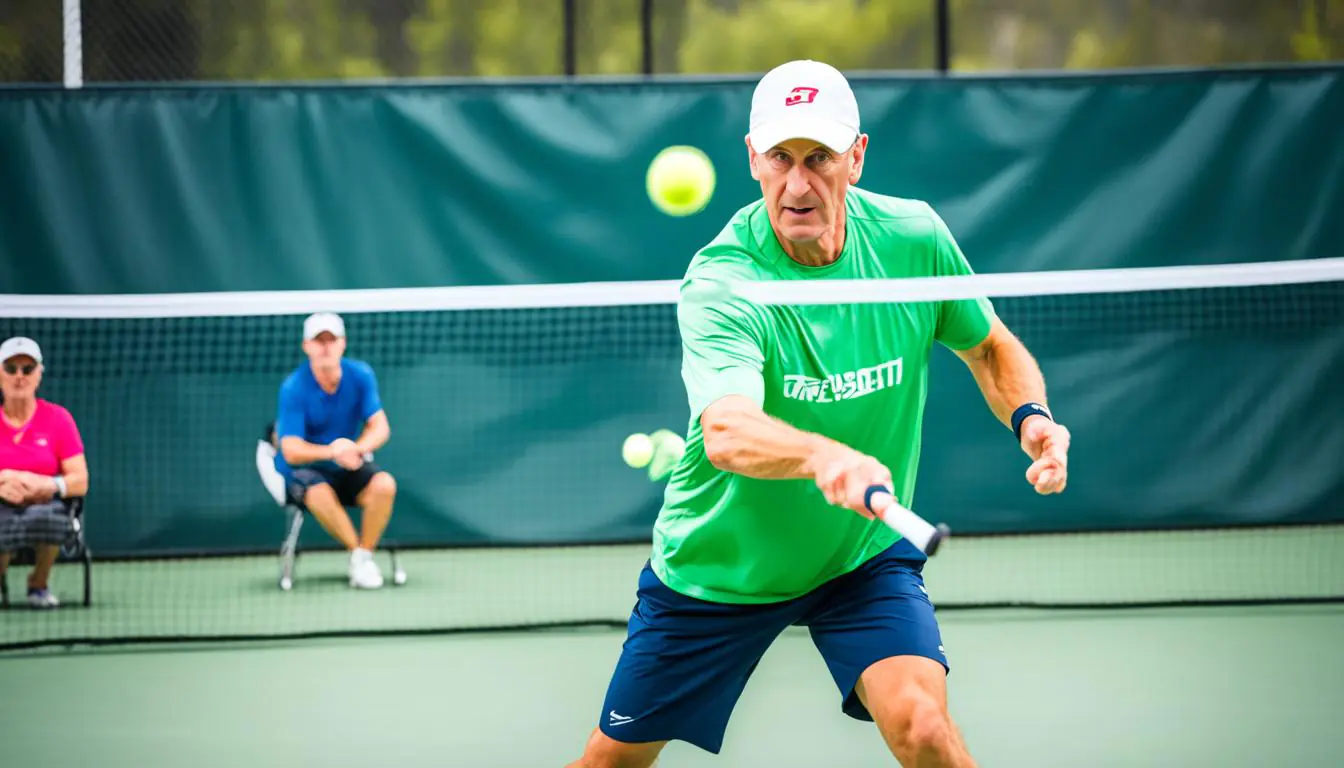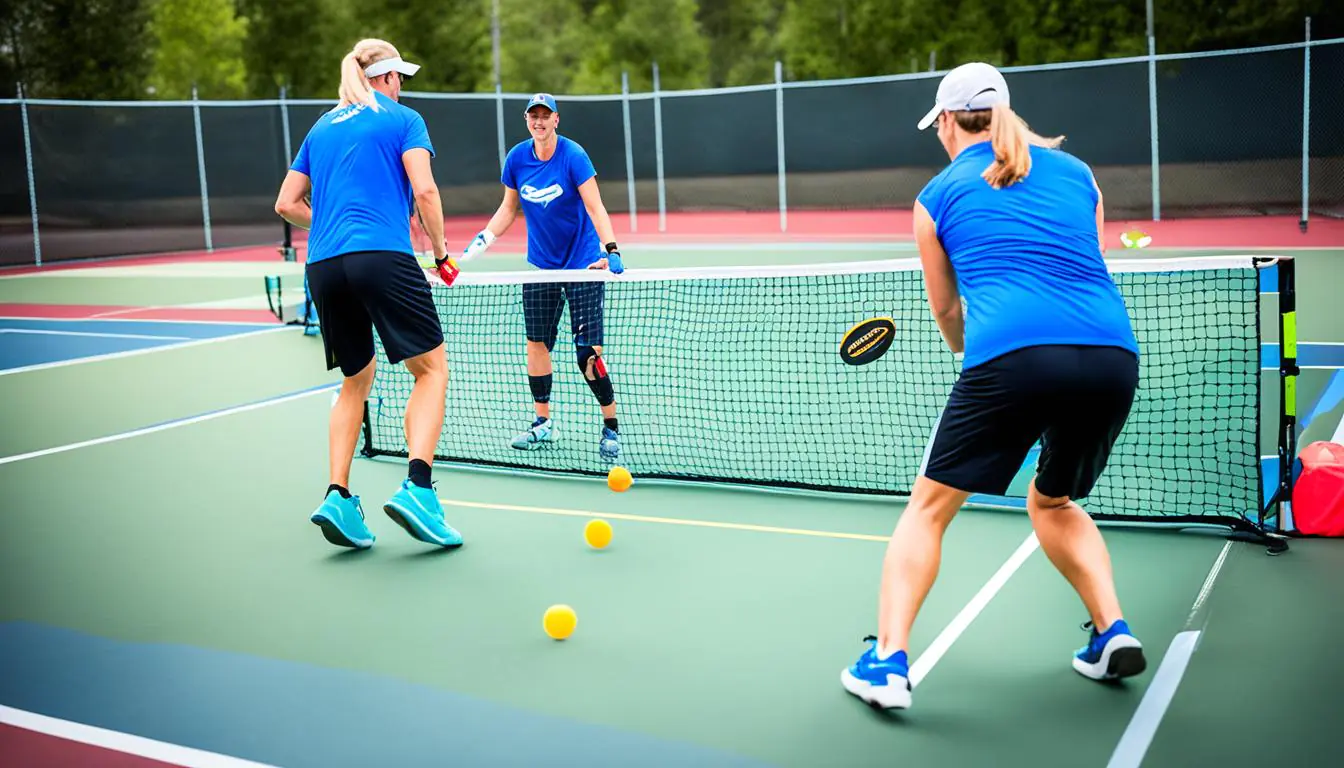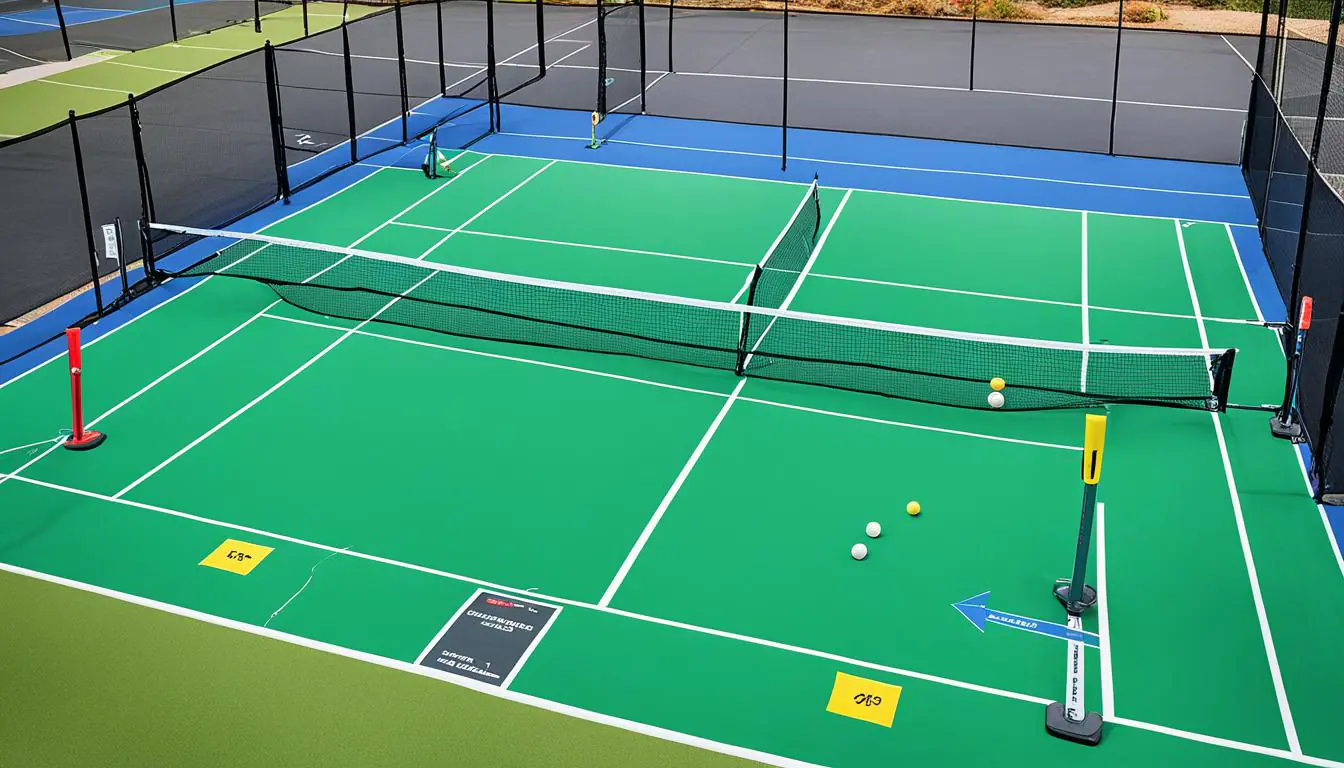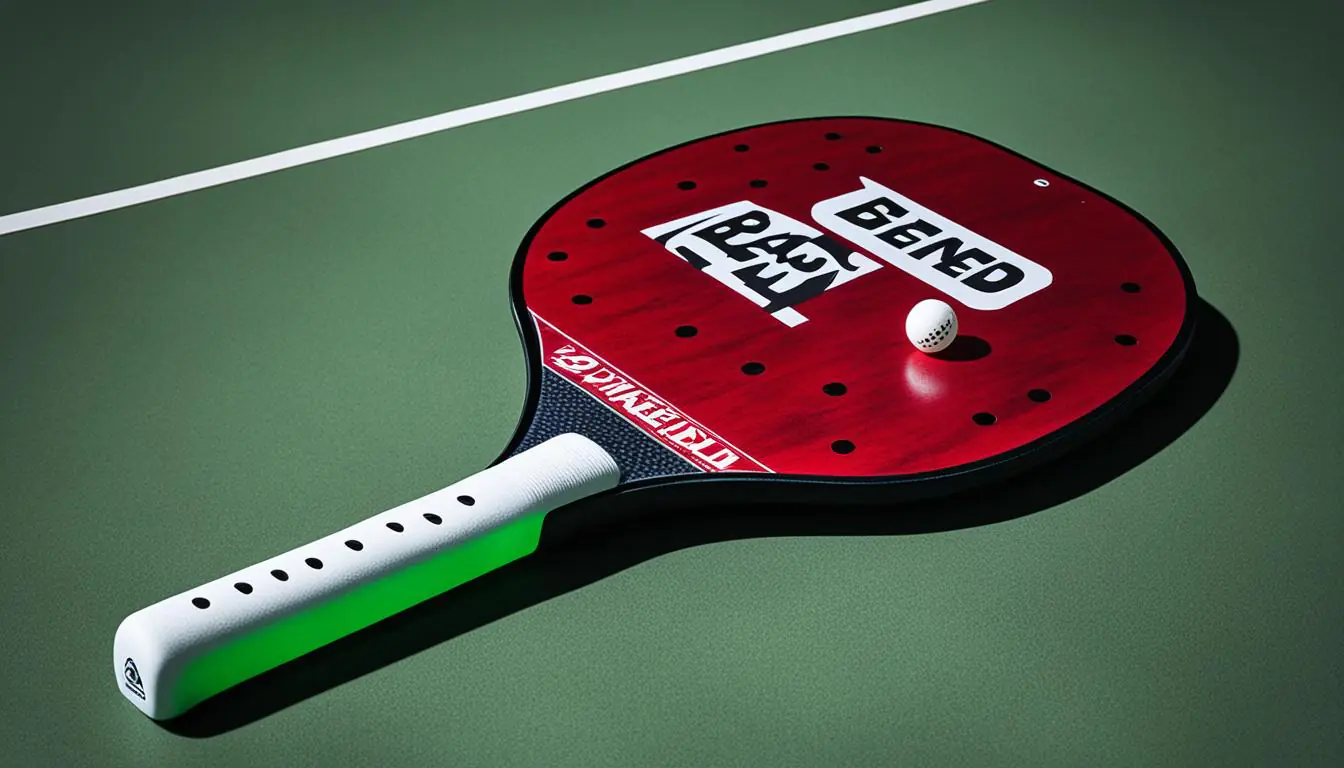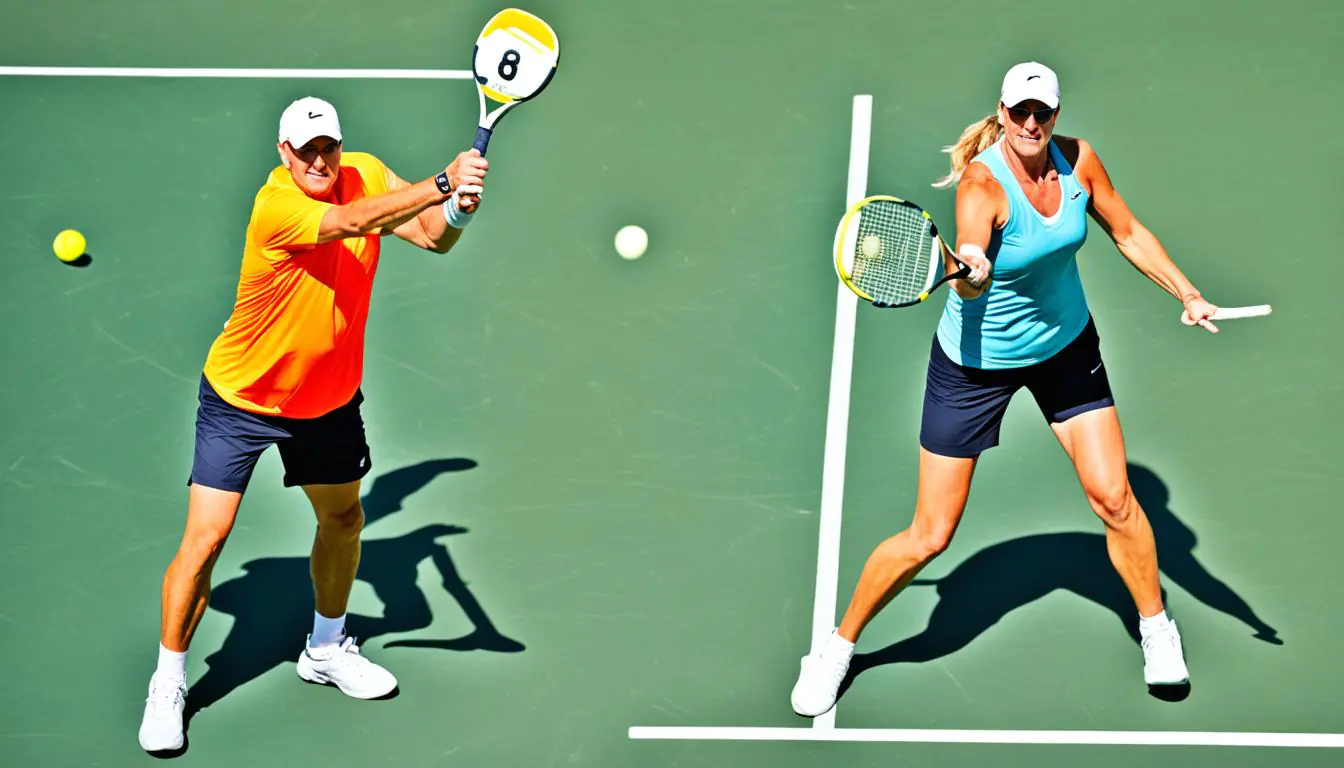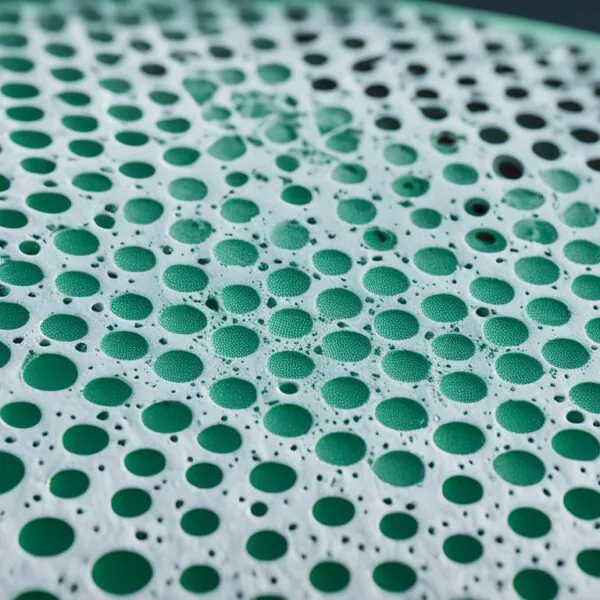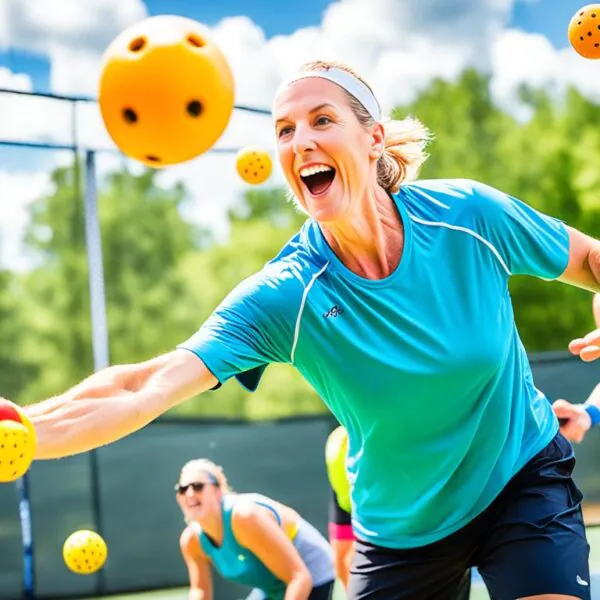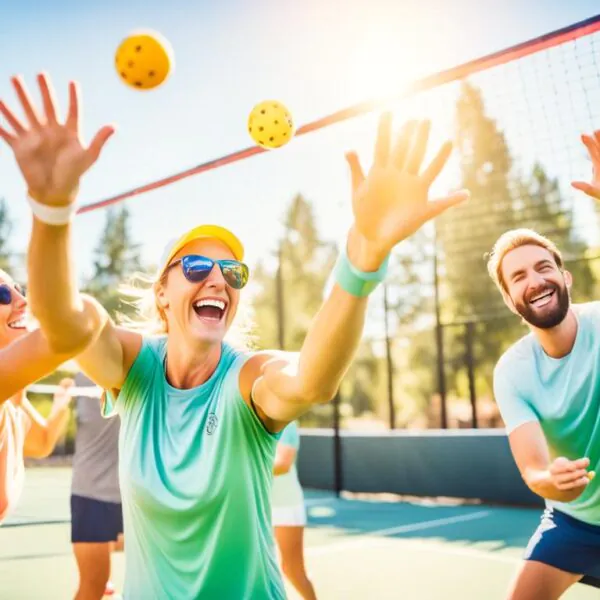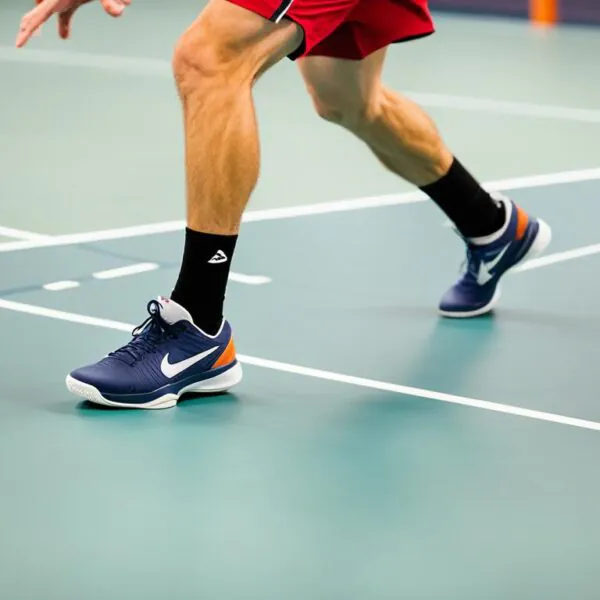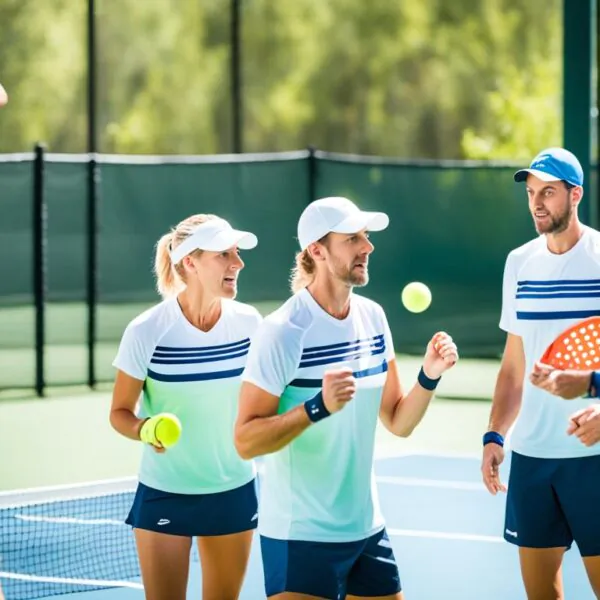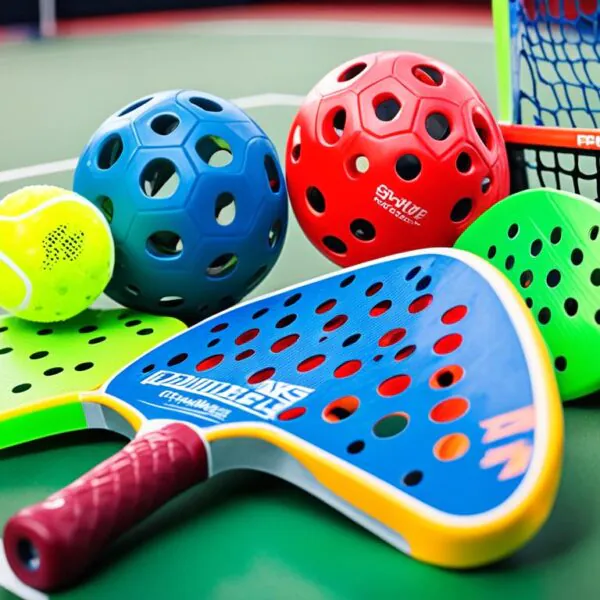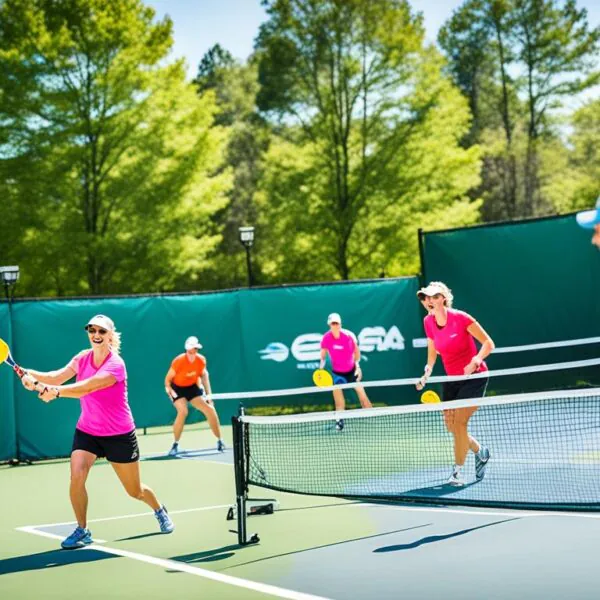Pickleball is now the fastest-growing sport in America. It mixes tennis, table tennis, and badminton. Players of all ages love it. Moving from doubles to singles play means learning new rules is key.
This guide will cover the rules of pickleball singles. We’ll look at strategies, scoring, and common mistakes. This will help you play better.
Knowing the rules of pickleball singles is important, no matter your skill level. Singles is a one-on-one game, unlike doubles. It requires different tactics and strategies.
This article will explain important parts like court size and serving. These are key for improving your pickleball singles skills.
Key Takeaways
- Understanding pickleball singles rules is critical for enhancing your gameplay.
- Singles play emphasizes individual strategy rather than teamwork.
- The standard pickleball court size is the same for singles and doubles, set at 44 feet by 20 feet.
- Mastering the serve in singles is essential for gaining an advantage in matches.
- Common faults can drastically affect your scoring opportunities, so it’s key to understand them.
- Players need to secure a minimum 2-point lead to win singles matches.
What is Pickleball and How Does It Work?
Pickleball mixes tennis, badminton, and table tennis. It’s fun and engaging for all players. Knowing the basics of pickleball is key for playing well. You can play with one or two people, each with its own fun.
The Basics of Pickleball
The main goal is to hit a plastic ball over the net into the other court. In singles, each player gets one serve. The score has two numbers, showing who serves and who receives.
The first serve starts from the right side of the court. If the score is even, serve from the right side. If it’s odd, serve from the left. The game ends at 11 points, with a 2-point lead needed to win.
The Equipment Used in Pickleball
Choosing the right pickleball equipment helps a lot. You need a light paddle for better control and power. The plastic ball with holes is key, and picking the right paddle can change your game.
For more info, check out guides on rules and strategy.
The Appeal of Singles vs. Doubles Play
Players like pickleball in different ways. Singles needs endurance and solo strategy. Doubles is all about teamwork.
Singles is thrilling, making every move count. It’s all about your skills and how you play. Singles is great for improving your game.
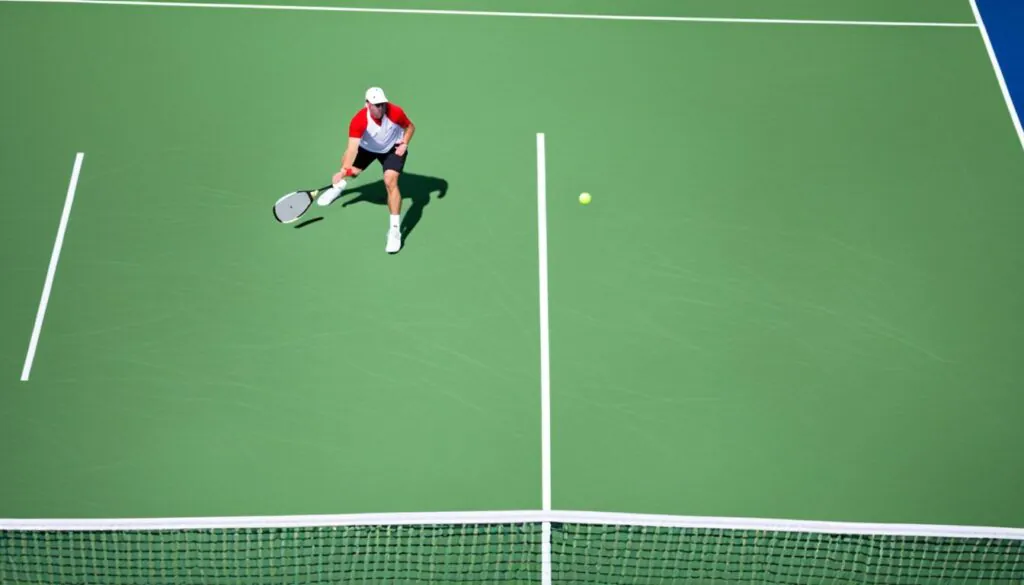
Pickleball Court Dimensions
Knowing how big a pickleball court is important for all players. The standard size is key for good gameplay and positioning. Knowing the court size helps me plan my moves, whether I’m playing alone or with a partner.
Standard Court Size
A standard pickleball court is 44 feet long by 20 feet wide for singles or doubles. These sizes are important for moving around the court. The net is 36 inches high at the sides and 34 inches in the middle. This makes the game fair for everyone and follows USA Pickleball rules.
Differences in Singles and Doubles Court Use
The court size is the same for singles or doubles, but how you use it changes. In singles, I have to cover the whole court, which means I need to move a lot and think ahead. In doubles, two players share the court, making it easier to cover.
This difference changes how I play. In singles, I try to reach every shot and limit my opponent’s moves. This affects how I plan my game.
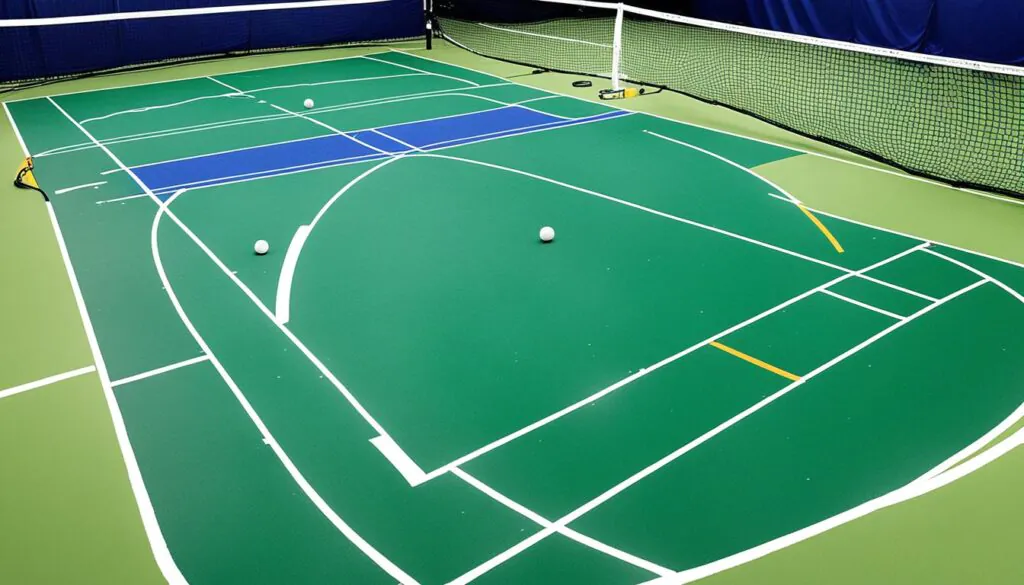
| Dimension | Singles/Doubles | Notes |
|---|---|---|
| Length | 44 feet | Consistent for both singles and doubles |
| Width | 20 feet | Standard size for all play types |
| Net Height (sidelines) | 36 inches | Regulates fair play |
| Net Height (middle) | 34 inches | Drop in height aids gameplay dynamics |
| Minimum Recommended Size | 30 feet x 60 feet | Allows for ample playing space |
Understanding Pickleball Singles Rules
Pickleball singles rules are key for players wanting to play this fast game. Singles play has its own challenges and strategies. I’ll talk about the main differences and rules for singles play.
Key Differences Between Singles and Doubles
In singles pickleball, each player serves once. Doubles teams get two serves before losing their turn. The score is simple, with just two numbers.
Despite the same court size, strategies can vary. Players’ positions and how they play near the net are key differences.
Specific Rules Governing Singles Play
The game’s basics are the same, but singles play has its own rules. Points are scored when serving diagonally across the net. The server’s score tells which side to serve from.
Players get one chance to serve per point. The two-bounce rule means the ball must bounce before being hit for the first two shots.
Knowing these rules helps players play better. Mastering these rules and differences will improve your game.
Pickleball Serve Rules
Learning how to serve in pickleball is key to winning the game. I use special serve techniques to get ahead from the start. A strong serve deep into the opponent’s court puts a lot of pressure.
Knowing the rules of pickleball serving helps me improve. It also helps me avoid making mistakes.
How to Make an Effective Serve
To serve well, I hit the ball with an underhand motion from behind the baseline. This keeps my control and aim good. I aim to serve deep and diagonally into the other court.
This makes it hard for my opponent to return. A strong serve can make my opponent go on defense right away.
Understanding the Underhand Serve
The underhand serve has its rules. It must be hit below the waist. I make sure I don’t step over the baseline before serving. If I do, it’s a fault and can change the game.
I aim to surprise my opponents with this serve. It helps me get more points.
Common Serving Faults
Knowing what mistakes to avoid is key to getting better. Common mistakes include:
- Serving to the wrong side based on the score.
- The ball not going over the net.
- Touching the non-volley zone line during the serve.
- The ball going out of bounds.
Knowing these mistakes helps me stay focused and reduce errors. Practicing a good serve and avoiding these mistakes improves my game in singles pickleball.

Pickleball Scoring System
Learning how to score in pickleball is key, especially in singles. Players earn points from their serves. I can score only when I serve, which makes it tense for my opponent to avoid mistakes.
If my opponent makes a mistake, I get a point. This shows how important I must play well when it counts.
How Points are Earned in Singles
In singles, serving rules make scoring unique. I serve from the right side if the score is even, and from the left if it’s odd. This keeps the game exciting and makes positioning important.
Only I can increase the score when I serve. So, every serve is key.
The “Win by 2” Rule Explained
Games go to 11 points, but remember the win by 2 rule. I need to win by at least two points. This requires skill and mental strength in close games.
It makes every rally important, especially when scores are tied. This rule adds excitement to the game.
Calling the Score
It’s vital to call the score right. In singles, I say my score first, then my opponent’s. This avoids confusion and keeps the game moving smoothly.
Calling the score right helps us stay focused. It’s important for a good game flow.
| Aspect | Singles | Doubles |
|---|---|---|
| Points Scoring | Only the server can score | Only the serving team can score |
| Score Calling | Server’s score first, then receiver’s score | Server score, receiver score, server number |
| Serves from | Right side for even score, left for odd | First server starts from the right |
| Winning Requirement | Win by 2 points | Win by 2 points |
For more info on this fun sport and its community, check out Pickleball Cabin.
Common Pickleball Fault Rules
Learning the common pickleball fault rules is key for anyone wanting to get better at singles play. Knowing these rules helps me play better and fairly. I will talk about foot faults and other mistakes you can make in singles.
Understanding Foot Faults
Foot faults happen a lot in singles play, like when I step over the line while serving. This mistake can lose me a point right away. Knowing where I should stand can stop these errors. Important things to remember about foot faults are:
- The server must stay behind the baseline when serving.
- Stepping on the line while serving is also a fault.
- It’s important to stay within the right areas for pickleball rules enforcement.
Other Common Faults in Singles Play
There are many other mistakes that happen in singles play too. Knowing these is key for a fair and fun game. Some common mistakes to watch out for are:
- Breaking the 2-bounce or 3-hit rule.
- Letting the pickleball bounce twice on my side.
- Hitting the ball before it bounces in the non-volley zone.
- Serving to the wrong side.
- Hitting the ball out of bounds or under the net.
Knowing these singles play violations helps me avoid mistakes and play fairly. For more info on rules and privacy, check out the privacy policy.
Conclusion
Mastering pickleball singles is key to better gameplay. I now know the rules, the court size, and how to serve and score. This makes me ready to face my opponents with confidence.
Playing singles means moving a lot and guessing where the ball will go. Knowing about paddle sizes and scoring helps me control the game. I aim to beat my opponents by using these skills wisely.
Improving my skills and knowledge in pickleball singles makes the game more fun for everyone. The more I practice, the better I’ll do on the court.
